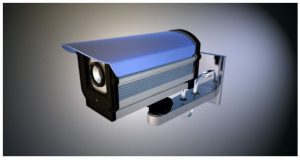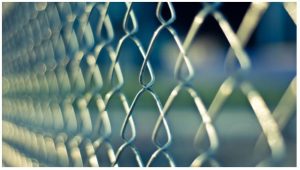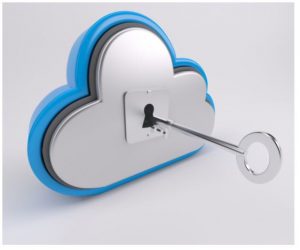Written by Lucy Atkinson
Housekeeping is often underappreciated and the role considered to be ‘entry level’, but housekeepers have one of the higher risk jobs in the hospitality sector and there are many things they need to consider while carrying out their duties.
Overlooking these risks can lead to poor training and health and safety management, leaving businesses vulnerable to the consequences of accidents in the workplace. Staff shortages and fines levied as a result of breaches of health and safety legislation are just two potential outcomes that could cause havoc within your organisation.
Hazards to Consider
Housekeepers generally perform the same tasks as we do when keeping our own houses, and perhaps that’s why we mistakenly believe housekeeping is a low risk role. However, if we look at the challenges faced by many housekeepers daily, we start to appreciate why they need a comprehensive health and safety system in place.
Listed below are some of the risks that housekeepers face each day. We’ve gone into greater detail regarding the use of chemicals, manual handling, language barriers and contamination.
- Spillages
- Asbestos
- Lifts
- Uneven surfaces
- Working at heights
- Vehicle movement
- Lone working
- Electrics
- Violence
- Confined spaces
- Window safety
- Legionella
Chemicals – cleaning requires the use of various chemicals, exposing housekeepers to the risk of chemical burns or the ill-effects of exposure to harmful fumes. Furthermore, in a hospitality environment bathrooms are rarely well ventilated, with little in the way of fresh airflow. As such, products must be selected with care to ensure the best standards of hygiene whilst mitigating risk. Housekeepers should have the chemicals safety data sheet to hand to ensure they have access to relevant information regarding proper use, and should be equipped with the correct Personal Protective Equipment (PPE). They should also have access to up-to-date emergency contacts and procedures.
Manual handling – with many hotels now switching to heavier mattresses, each bed change is one closer to an injury, as each corner of a mattress must be lifted to change a sheet or tuck in a cover. Housekeepers must receive proper manual handling training to prevent injury, as such injuries can leave hotels short-staffed in an area where staffing levels are critical. Manual handling also comes into play when cleaning detached accommodation with stairs, where cleaning equipment may need to be carried between rooms.
Language barriers – employers are now engaging a more diverse workforce and are attracting many different nationalities. This leaves room for planned methods to get lost in translation. When employees move away from company procedures, the risk of an accident or incident increases significantly. To overcome language barriers employers must put in place a universal system, for example using colour coding equipment, adopting pictograms and showing training videos to employees. Software solutions often provide translation tools to increase understanding in the workplace for all staff.
Contamination – we don’t like to think about it but a housekeeper may be exposed to various bodily fluids whilst cleaning bathrooms and bedrooms, and they should be properly trained to observe appropriate handwashing techniques and ensure that they use gloves when required.
It’s the Law!
Workplace safety in developed nations such as the United States, Canada, and much of the European Union is more deep-rooted than in other regions of the world. The rest of the world can be divided into three additional categories:
- Developing nations
- Third World nations
- Those countries that have regions or companies that span all three categories
Health and safety laws of some kind are in place in most countries, and these laws typically set out a framework for the duty of care which employers have towards employees and members of the public, and employees have to themselves and to each other.
The common global approach to management of health and safety at work frequently adopts the following steps to review workplace risks:
- Step 1: Identify the hazards
- Step 2: Decide who might be harmed and how
- Step 3: Evaluate the risks and decide on control measures
- Step 4: Record your findings
- Step 5: Review your assessment and update as and when necessary
Using Risk Assessments
Engage your staff, involve them, empower them! Unfortunately, too many people waste hours creating and maintaining perfectly compliant risk assessments before putting them back in a folder to sit and wait until the next review date.
Your employees need to have seen and understood the risk assessments you have in place. They need to be able to access the control measures the risk assessment identifies for them, whether that’s a one-week training course in Dubai or providing them with access to a pair of latex gloves. Creating a risk assessment document alone will not protect you should your methods come under scrutiny by your health and safety governing bodies.
More Staff Training
In most developed countries an employer has a legal duty to provide a safe working environment for their employees, and they are responsible for ensuring that each staff member is adequately trained to carry out their role in a safe and competent manner. The best way to manage risks within the workplace will always be effective training; ensuring employees know what they are supposed to be doing, how they should be doing it and who to inform if there is an issue. Trained staff are more efficient and consistent, they protect your brand by adhering to standards and they are less likely to have an accident in the workplace. Evidence shows that having well-trained staff not only increases performance but also decreases staff attrition by empowering staff and making them feel valued.
Introducing a Competent Person (CP)
Nominate people as CPs for housekeepers to go to if they are unsure about something, and ensure your CPs are frequently trained and have access to tools and information to keep their knowledge current. Encourage your staff to give and receive feedback on methods and hazards in the workplace. Have an anonymous comments box and encourage staff to report anything that they feel could compromise safety.
Keep on Top of It!
Create deadlines and expiry dates, assign teams to review relevant documents and have one competent person sign off documents before distributing them to your team – consider using software to manage your health and safety, so you don’t have to manually manage your H&S updates. It may cost money, however it’s very likely that whichever solution you pick, it will cost less than any settlement of fine for breaches of health and safety regulations.
Think, Plan, Action
With forethought and careful planning you can turn housekeeping into a low-risk profession. If you don’t adopt this approach you risk facing the consequences of accidents in the workplace, which can include heavy fines, potentially damaging media coverage and potentially even the closure of your business.
Author Bio:
Lucy Atkinson is a Business Support Analyst at CRAMS, where she is able to apply her passion for positive client and team engagement. A keen blogger through her teens, Lucy is delighted to now be able to blog professionally and considers this one of her favourite parts of her role.
CRAMS (Comprehensive Risk Assessed Method Statements), is a fully inclusive, cloud-based software solution for all things health and safety. It is the only solution to link risk assessed method statements to your people, places, events and training, providing a fully auditable and protective solution. The software also tracks staff training course completion and provides access to over 50 certified e-learning courses at no extra charge! CRAMS clients have a better H&S culture within the workplace, having been given the tools to be proactive in improving their own safety.






